16+ Sample Assessment Implementation Plan
-
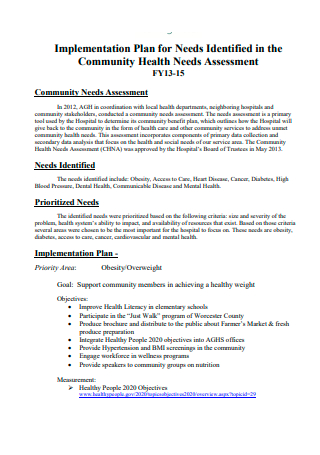
Community Health Needs Assessment Implementation Plan
download now -
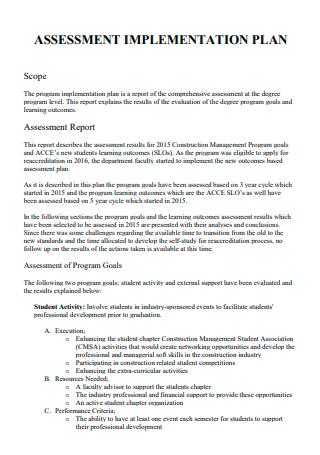
Assessment Implementation Plan Template
download now -
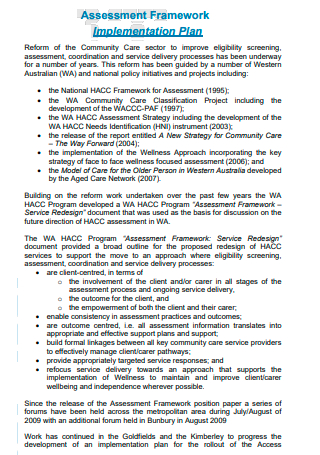
Assessment Framework Implementation Plan
download now -
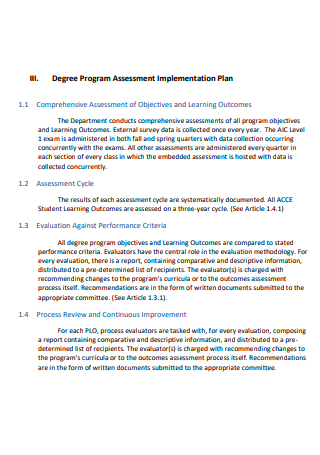
Degree Program Assessment Implementation Plan
download now -

Community Health Assessment Implementation Plan
download now -
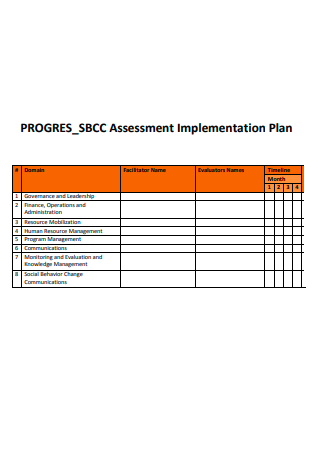
Progress Assessment Implementation Plan
download now -
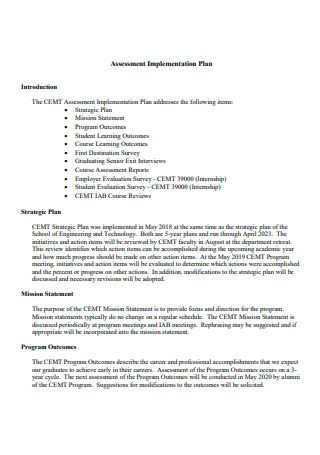
Assessment Implementation Plan Example
download now -
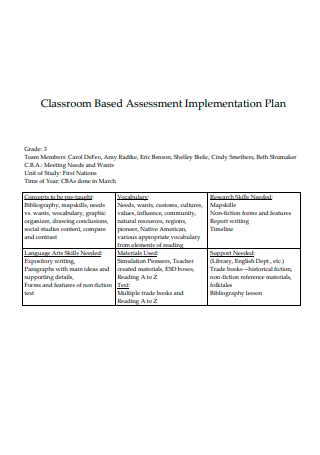
Classroom Based Assessment Implementation Plan
download now -
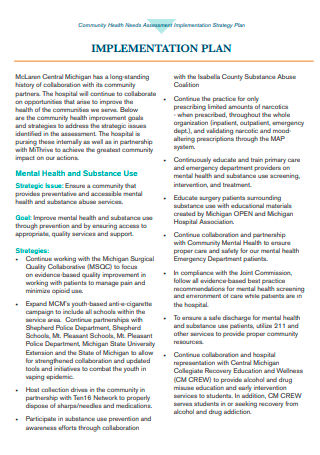
Community Health Needs Assessment Implementation Strategy Plan
download now -
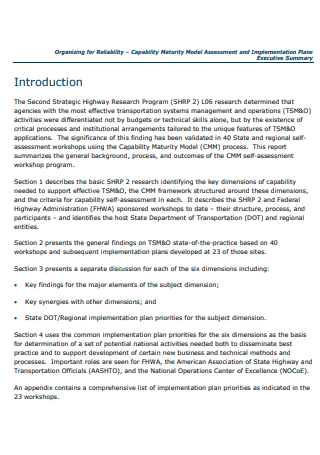
Model Assessment Implementation Plan
download now -
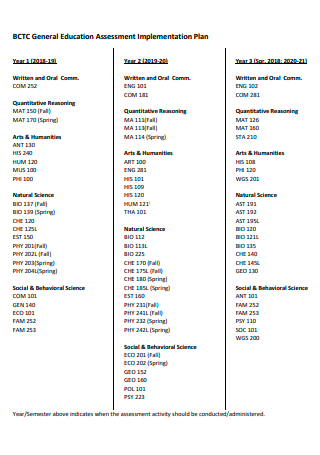
General Education Assessment Implementation Plan
download now -
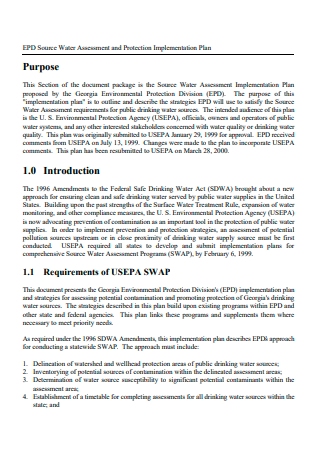
Water Assessment and Protection Implementation Plan
download now -
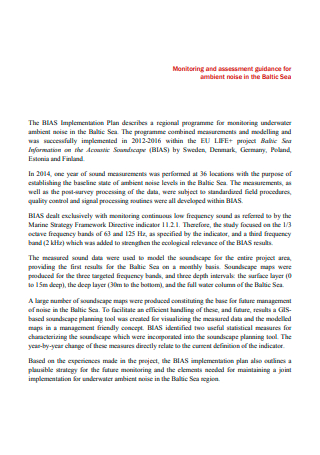
Assessment Implementation Plan in PDF
download now -

assessment implementation plan
download now -

Interim Assessment Implementation Planning and Checklist
download now -
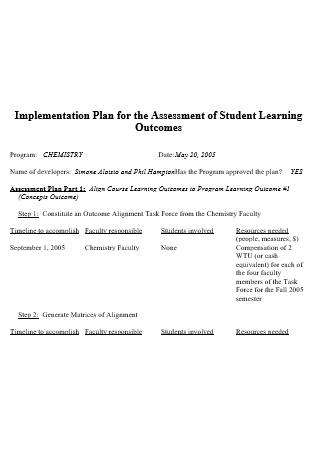
Assessment of Student Learning Implementation Plan
download now -
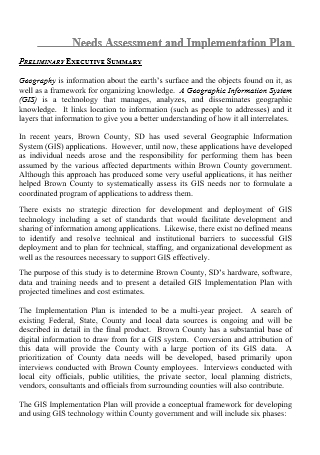
Needs Assessment Implementation Plan
download now
FREE Assessment Implementation Plan s to Download
16+ Sample Assessment Implementation Plan
What is an Assessment Implementation Plan?
Different Types of Assessment Implementation Plans
Basic Components of an Assessment Implementation Plan
How to Write an Assessment Implementation Plan
FAQs
How to conduct a needs assessment?
What are the types of implementation methodologies?
What are some examples of assessment implementation plans?
Why is an assessment implementation plan important?
What is an Assessment Implementation Plan?
An assessment implementation plan is an all-inclusive, and well-coordinated written document which is generally used for the successful development of a specific implementation methodology through an assessment of the operational business activities, and/or other outputs of the business or organization. It is a strategic management tool which integrates strategy, process, action and the inclusion of all parts of the project, program, event, or system while outlining the proper steps your business or organizational team should take when fulfilling a shared goal or objective. This assessment implementation project plan guides various individuals and professionals such as educators, academic professionals, project managers, business executives, product developers, brand managers, marketing specialists, and many other professionals in many fields and industries to promote in-depth and systematic planning when reaching success in the assessment implementation projects.
Based on a PMI report, out of all the businesses and organizations that employ project managers, 61% provide a career roadmap, with 47% of these having a clearly defined and straightforward way to progress. This means that career progression is fundamental for workers and other professionals so that they can now prepare and be ready when moving forward in the said roadmap. That’s why providing needs assessment for the employees through job training and evaluation needs to be promoted by using effective assessment implementation plans. Thus, all kinds of business department managers, operational managers, product developers, program managers, system developers, project supervisors, and other project managers should effectively create a compelling and well-detailed assessment implementation plan.
Different Types of Assessment Implementation Plans
Albert Ellis said: “Thinking rationally is often different from “positive thinking,” in that it is a realistic assessment of the situation, with a view towards rectifying the problem if possible.” Analytical and realistic thinking is essential when it comes to the assessment of a particular project, program or system. Another thing you need to do is have a clear insight and understanding about the different types of assessment implementation plans that you will use for your clinical research and development matters. Here we will explain to you about the different types of assessment implementation plans:
1. Community Health Needs Assessment Implementation Plan
Are you currently working on the planning for the needs assessment of your community? It is integral that you are skilled in developing the plan for the community needs assessment because it is a primary tool for hospitals to determine their community benefit plan as it outlines how the hospitals will give back to the community in the form of health care and other community services. Make sure that you incorporate the major components of primary data collection and secondary data analysis that aim on the health and social needs of the service area. Identify the needs of the community such as access to care for obesity, heart disease, cancer, high blood pressure, dental health, communicable disease and mental health. After that, determine the prioritized needs based on the size and severity of the problem, health system’s ability to impact, and availability of resources that exist. Define your objectives and other implementation strategies as well.
2. Degree Program Assessment Implementation Plan
If you need to develop a degree program assessment, it is important to write a cohesive degree program assessment implementation plan to carefully structure key educational assessment ideas, methods, strategies and techniques for the degree program that will be evaluated and implemented. Identify all degree program objectives and learning outcomes. Explain how the results of each assessment cycle are systematically documented. Then, all the specific objectives and learning outcomes of the degree program are compared to stated performance criteria. The program evaluators are in charge with making recommendations of the necessary changes to the degree program’s curricula or to the outcomes assessment process itself. The process evaluators are assigned with composing a report containing comparative and descriptive information for every evaluation. The recommendations are in the form of written documents which will be submitted to the educational management committee.
3. Assessment of Student Learning Implementation Plan
According to the book The Formative Assessment Action Plan, a formative assessment system is a powerful way to improve student achievement. John Hattie and Helen Timperley noted: “Feedback has no effect in a vacuum; to be powerful in its effect, there must be a learning context to which feedback is addressed.” They propose a formative assessment system that contains three components: feed-up, feedback, and feed-forward. Feed-up assures that students are able to understand the purpose of the assignment, task or lesson which includes their student learning assessments. Feedback offers students information about their academic successes and needs. Feed-forward guides student learning according to their performance data. To facilitate the assessment of student learning, you may use this system for your implementation plan or use this as your guide for your own student learning assessment.
4. Job Training Needs Assessment Implementation Plan
Several statistical reports show that 87% of millennials believe learning and development in the workplace is integral, 76% of employees say that a company would be more appealing if it offered additional skills training to its staff, 74% of workers are willing to learn new skills or re-train in order to remain employable, and 59% of millennials claim that career development opportunities are extremely essential when deciding whether to apply for a job position. Employers and managers need to conduct effective needs assessments and develop an implementation plan for the job training of their employees, allowing ongoing learning and professional career growth in their workforce.
Basic Components of an Assessment Implementation Plan
In this section, you will learn how to construct a well-written and systematic assessment implementation plan. But you need to learn about the different kinds of components of an assessment implementation plan. Include the following elements for you to create a professional piece of writing:
Include the assessment implementation methodologies used in the assessment implementation plan. Justify the applied methodological approach. Explain the tools and resources that will be needed in the assessment implementation. Project Assessment Implementation Plan: Organize the breakdown structure of contents in the assessment implementation plan. Classify the expected assessment activities in phases and content blocks. Determine the dates in which the contents of the assessment implementation are done. ]Summary: Develop a summary of the key points of your assessment implementation. Then, connect the value or results of the major points of your assessment and evaluation plan.
How to Write an Assessment Implementation Plan
Lindauer said: “The primary change that outcomes assessment has caused, it seems, is to place responsibility on institutional units for providing evidence of their contributions to desired educational outcomes and to incorporate outcomes assessment into organizational planning and improvement.” Whether you are an educational program developer, a business operational manager, a project manager, or a project supervisor, it is significant to establish effective project management systems in your projects or programs, and align your professional career practices on the appropriate development and execution of a well-coordinated assessment implementation plan. Below are some easy-to-follow tips that indicate how to write a clear and structured assessment implementation plan:
Step 1: Define What is to Be Assessed and Evaluated
Before starting to write your assessment implementation plan, it is very important that you define the plan of the project or program that will be assessed or evaluated. Describe the project or program goals, objectives, specific tasks and how goals will be achieved. Inform your readers about the idea or concept, and scope of your project or program, and why it needs to be assessed and evaluated.
Step 2: Describe the Mission and Vision Statement
Describe what the project is all about, and its approach when it comes to fulfilling the objectives. Tell how your organization should perform in conducting the assessment implementation. After that, determine the anticipated outcomes of the assessment and evaluation.
Step 3: Include the Resources Needed and Performance Criteria
The next step is to include the description of the resources needed and the performance criteria that will be used for the assessment implementation. Your assessment implementation should adhere to the relevant organization methodology standards. Use the specific methodology standards checklist being provided by your management or organizations that your evaluators can quickly detect and assess the adherence to a specific standard. Doing this will allow you to utilize the proper assessment approach for your project or program.
Step 4: Construct a Summary
Construct the summary of the assessment implementation. Document and highlight the major points of your assessment implementation plan. Reveal the purpose, statistical techniques, analysis and evaluation process, data collection, discussion and interim results. Demonstrate a system that will guide you in monitoring the evaluation stages which lead to the accomplishment of the assessment implementation plan.
Step 5: Establish Clear Timeline
Set a clear timeline to help guide the execution of the assessment implementation plan. Show which assessment work has to be performed and when it will be completed. Include other responsibilities or obligations that must be done in your assessment implementation plan.
Step 6: Proofread and Prepare the Overall Plan
Review your overall assessment implementation plan and ensure that you fully include all the fundamental points in your plan. Highlight the connection between the specific assessment goals, objectives, resources, strategies and methods used for attaining the objectives, and the evaluation of the project managers or program developers involved in the assessment implementation plan. If you realize that you forget some sections that need more important details, we highly suggest that you edit and revise the document as soon as possible.
FAQs
How to conduct a needs assessment?
When conducting a needs assessment, it is important that you plan by considering several questions before developing and conducting a needs assessment like what is the main purpose of the assessment, what specific needs are being assessed, and what resources are available to conduct a needs assessment. Next, develop questions and make sure that the questions are clear and easy to understand. Then, analyze and prioritize data by searching for themes in responses, aggregating data to explore differences in responses, and synthesizing your data while thinking about the connections and meaning from the different sources of information.
What are the types of implementation methodologies?
Every business firm and organization can adopt several different implementation methodologies. These are direct cutover, pilot implementation, parallel operation, and phased implementation. Direct cutover implementation methodology is speedy and least expensive methodology which is used when the business firm or organization selects a specific date that the old system will not be used anymore. But, it can be riskiest as well if the new system has an operational issue or is not properly prepared. Pilot implementation is a methodology used when a subset of the organization or a pilot group starts using the new system before the rest of the organization, enabling the support team to concentrate on a smaller group of individuals. Parallel operation is a methodology when the old and new systems are utilized simultaneously for a limited period of time. Phased implementation is a methodology used when the different functions of the new application from the old system are turned off, allowing an organization to transfer from one system to another slowly.
What are some examples of assessment implementation plans?
Some examples of assessment implementation plans are community health needs assessment implementation plan, assessment framework implementation plan, degree program assessment implementation plan, progress assessment implementation plan, classroom based assessment implementation plan, community health needs assessment implementation strategy plan, model assessment implementation plan, general education assessment implementation plan, water assessment and protection implementation plan, interim assessment implementation planning and checklist, assessment of student learning implementation plan, needs assessment implementation plan, and many more.
Why is an assessment implementation plan important?
An assessment implementation plan is important for business firms and organizations because it helps them in detecting and examining the overall status and performance of their implementation methodology, as well as in measuring the effectiveness of their implementation methodology when it comes to assessing the needs of their employees, management, and other people.
Writing a clear and comprehensive assessment implementation plan is an integral method to assess a particular project plan or program design and to provide the planning tools and procedures to make the assessment happen. To assist you in writing your assessment implementation plan, you can learn and apply the tips aforementioned in this article. As the roadmap of the evaluator, it contains optimal assessment strategies for conducting the assessment fully well. Plus, we have included several assessment implementation plan samples, community health needs assessment implementation plan, assessment framework implementation plan, degree program assessment implementation plan, progress assessment implementation plan, classroom based assessment implementation plan, community health needs assessment implementation strategy plan, and other assessment implementation plan templates that you can download.
